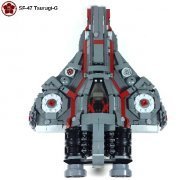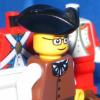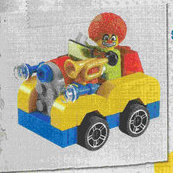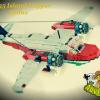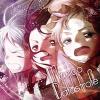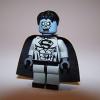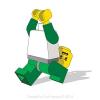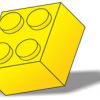Search the Community
Showing results for tags 'Train'.
Found 774 results
-
Haven't been doing much with Lego for the past couple of months. Had some time off school for December and have spent the last week working on this! I'm pretty pleased with it. Here's a reference pic to see what I was working off of.
-
For the last three years, I have constructed a yearly Christmas village that has made use of Lego's Winter Village sets. This year I added the new Toy Shop but decided to go back in time and create a Western Christmas Village. Thank you for any comments and advice. Have a Merry Christmas everyone. SAM_6739 by Micah Van Gorp, on Flickr SAM_6643 by Micah Van Gorp, on Flickr SAM_6667 by Micah Van Gorp, on Flickr SAM_6691 by Micah Van Gorp, on Flickr SAM_6660 by Micah Van Gorp, on Flickr SAM_6728 by Micah Van Gorp, on Flickr SAM_6717 by Micah Van Gorp, on Flickr SAM_6684 by Micah Van Gorp, on Flickr SAM_6686 by Micah Van Gorp, on Flickr For additional photos see: https://flic.kr/s/aHsknqwDbP
- 4 replies
-
- Western
- Lone Ranger
-
(and 5 more)
Tagged with:
-

9V motor issues - replace or convert to Power Functions?
Tannerman posted a topic in LEGO Train Tech
Long time reader, first time poster. So back in 2002 I picked up 4535 LEGO Express Deluxe to run around our Christmas tree. It features a 10205 My Own Train engine and tender with 9V motor and light package. I typically only run it around the holidays (after cleaning all the track, etc), but over the past few years I've been having issues with the motor. This year I'm noticing that it just runs for awhile... and then stops, almost as if its overheating or something. If I wait a while (5-10 minutes), the motor seems to work once again. My gut is that the motor is giving out on me finally, but wanted to confirm with those in the know. That said, if my 9V motor is failing, I'm looking at affordable next steps -- and also trying to keep a 4-year-old boy pretty happy. Do I suck up secondary market prices and buy another 9V motor or do I make the jump to Power Functions? If the latter, then I don't know really where to start regarding what I'd need to purchase from BrickLink, etc. Any help or advice would be appreciated (Also, if anyone has successfully converted this engine/tender combo to PF, I'm all ears). Thanks in advance! - Steve -
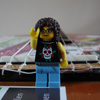
Lowlug LTC train layout @ LEGOWorld 2015 Utrecht (picture heavy)
UrbanErwin posted a topic in LEGO Train Tech
Hi all, Some of you might know me from this topic, in which I showed the progress made on a module for a group layout. As promised, and a little late, here are some pictures of the layout which was build by Aawsum, Alois, Moos, Thomassio, Wilbert and me. This were the plans for the entire layout: Layout_Final by Aawsum MOCs Lego, on Flickr After 1 day of setting up, the layout was as good as ready, there were some minor details, but they were solved in a couple of days. 20151020_210040 by Aawsum MOCs Lego, on Flickr Now just some pictures Legoworld Utrecht 2015 by Erwin, on Flickr Legoworld Utrecht 2015 by Erwin, on Flickr Legoworld Utrecht 2015 by Erwin, on Flickr Legoworld Utrecht 2015 by Erwin, on Flickr Legoworld Utrecht 2015 by Erwin, on Flickr Legoworld Utrecht 2015 by Erwin, on Flickr And a video made by Aawsum: LTC_Legoworld2015 by Aawsum MOCs Lego, on Flickr If you want to see more photo's from the layout, these albums should help: Aawsum, Alois, Me Questions, comments and critique are as always welcome. PS. If you have a link to some photo's you shot of the layout feel free to post it. -
[ MOC gallery] I am proud to present my take on the small train that was the first modern streamliner. Built in 1934, numbered 9900 and originally simply called the Zephyr (the last name in passenger comfort). After its success it was quickly joined by many more Zephyr's and was soon renamed the Pioneer Zephyr. There are many great articles on this historic train, e.g., here (note the PDF schematics that were incredibly helpful); here; and here. The Zephyr was the first lightweight train set, the first (or one of the first?) diesel electric powered trains, and the first stainless steel train. It was small and light, consisting of a motorcar that was a combination engine and RPO, then a combined express/coach, and a coach observation car. The entire train was articulated, with shared trucks between each pair of cars. I sought to reproduce the as delivered version of the train set. Several substantial changes were made over the first few years of the train's long life, including the addition of a 4th car (or 3rd car if you consider the motorcar a locomotive) and a large Mars light on the front and rear of the train. As such, my model might differ in appearance from many photos of the train after the changes were made. The train has been restored and is on display at the Museum of Science and Industry in Chicago, IL, USA. Another three of these train sets were built for the Burlington route, and the nearly identical Flying Yankee for the B&M. But enough history for now, first a quick image of the train itself, Look at all of those round curves... The nose was a challenge- how to get the rounded and sloped front. The above photo shows my solution. I would have liked to have gotten a little more slope, maybe one plate where I'm currently using half plate steps, but that would have only worked if there were curved sloped bricks of just the right shape/size. I was pleased with how well I was able to capture the distinctive air vents above the cab (including the small gap between the two vents, with room for the headlight), and also how I was able to get the right topographical shape from the rectangular slope bricks for the transition from the front to the top curves. At the end of the engine compartment is an abrupt narrowing and slow drop in height (again at half plate tall steps) to the roof of the cars. The photo also shows the IR receiver not so eloquently hidden. Some of the other shots show a "cap" built over the receiver. That was for the show this past weekend (which I'll post more about after uploading photos), and at this show, 10 ft away from where my trains were running, there were four stations for kids to run lego city train sets, with IR controllers and all. The cap blocked most of the IR, but you could still operate the train from 2 ft away. With that success, I rebuilt it again this morning and put the IR receiver completely under the 1x3 curved slopes so that it is now completely hidden. Again, it will hear the IR receiver from 2 ft away. I'll post photos of that update soon, but that will send the entire folder back for Brick Shelf moderation and I don't want to do that right now. Below the car you can see the skirting on the powered truck and along the body. This feature of the prototype also made it easy to hide a black PF train motor while blending it in with the model (similarly on the trucks, using standard PF train wheels in black, but more on that in a moment). Also of note are the doors with a half plate recess, the brick built mail catch, and custom decals using fonts from RailFonts.com The above shot shows a side view of the motorcar. The stark light does not do the step down in the roof justice. It looks much better with overhead lighting (as seen in some of the other shots). The above thumbnails show how I did the connections between cars. As noted above, the skirting on the wheels covers plain black PF train wheel sets. I got the idea for the 4x4 curves for the diaphragms from Swoofty's SP cars. The configuration in the photos is designed to run on R88 or better curves. The lenght of the cars lead to too extreme swings on R44 curves and the outer corners will knock together. However, with a quick rebuild of the trucks to add one stud separation, she will run fine on R44 tracks. Here is the middle car. The doors were another challenge to get the half plate offset with the profile bricks, and then quick turn from studs up to studs sideways. All sorts of fast brickwork in the intervening 6 stud width of the train. Needless to say, my brain is still hurting a bit from all of the hoops to get the offsets working. Although none of the photos show it, the coach windows offer a clear view across the train. Here's a shot of the observation car. More half plate offset doors, skirting, etc. The rounded observation end was another challenge... ... I started with my basic design from the North Coast Limited. I made a few quick improvements- the NCL had 1 brick tall windows on the sides and so I had to make the observation windows either 2.5 plates tall or 5 plates tall. The Pioneer Zephyr has 5 plate tall windows to help emphasize the small size of the prototype, which then made the transition to the snotted windows on the curved section a lot easier. But I also faced a challenge. The NCL uses a curved winshield to transition from the 1x3 curved bricks of the roof to the curves of the rear of the train. I did not have enough height to fit that same piece on the Zephyr. So I wound up using a wedge plate design to again capture the topographical form of the curved section. It works from a distance at least. Here's a shot of the train from the inside of a R108 curve... ... and a shot at speed at the show this past weekend. Note the bulb over the IR receiver (which as noted above, has since been smoothed over and the IR receiver can no longer be seen from the outside (I'll post those photos in a week or two). If that isn't enough, you can find more photos here in the full gallery. Comments, questions, suggestions, etc. are welcome...
-
One of the many companies Aardman Animations (the studio behind Wallace & Gromit and Creature Comforts) have made adverts for is LEGO. What is uploaded on YouTube by the Hall of Advertising channel is one advert done for Train... And one very impressive advert done for Pirates... But also, my Creating 3-D Animation book mentions a spaceman advert Aardman made that was similar to the Pirates one. I looked it up and yes, I found a Space advert with the same construction characters (2:30): But I've also seen listed in an interview a mention of producing advertising for LEGO Star Wars. This interview came out before Chicken Run and LEGO Star Wars came out in 1999 so it must have been in the franchises early years. http://www.telepathy.co.uk/aardman/culture/faqs.html Does anyone know of some early LEGO Star Wars advert with stop-motion in it?
-
A little history: I was about to pull the trigger on the altBricks track. I literally had the content uploaded to Kick Starter but needed to tie up some loose ends before posting and then, BAM, the ME KS project was public. But alas still no metal track... I considered releasing the altBricks version at the same time but worried that the ME KS project already tapped the funds of the LEGO train enthusiasts. I figured out a way to make metal and plastic track relatively simple in one mold for all 4 curves (or 3 curves and 1 straight). It's a one piece track sections (like LEGO track) that is 100% connector compatible to LEGO track. The beauty of the altBricks system is that one simple machining process on industry standard HO nickle silver rail satisfies any radius curve or straight length. I made prototypes, a half dozen of these straight tracks and a 1/4 circle R88 (I think 8 segments) using ME rails and they all work fantastically. I would continue to do this for my whole home layout but its a big pain in the butt to retro-fit plastic rails and you tend to mess up 1 out of 6 times destroying the plastic track. The question now is do I make this process public domain? If so, I hope that if someone runs with the idea they pay me 3 full circles of each radius and some straights as royalty :-) Or should I do a Kick Starter project and have altBricks do this? A better idea is if the ME guys would agree to talk with me, they are the most logical company to do this and this solution can work in their system too. And my royalty seems pretty reasonable. :-) Your thoughts? Thanks, SteveB altBricks
-
Hey fellow EBers, I'd like to present my second-ever train MOC, and the one I'm most proud of; a Burlington Northern EMD SD40-2 Burlington Northern EMD SD40-2 by Joshua, on Flickr Here's the engine without the base: EMD SD40-2 without base by Joshua, on Flickr The SD40-2 was introduced in January 1972 as part of EMD's Dash 2 series, competing against the GE U30C and the ALCO Century 630. Although higher-horsepower locomotives were available, including EMD's own SD45-2, the reliability and versatility of the 3,000-horsepower (2,200 kW) SD40-2 made it the best-selling model in EMD's history and the standard of the industry for several decades after its introduction. The SD40-2 was an improvement over the SD40, with modular electronic control systems similar to those of the experimental DDA40X. Peak production of the SD40-2 was in the mid-1970s. Sales of the SD40-2 began to diminish after 1981 due to the oil crisis, increased competition from GE's Dash-7 series and the introduction of the EMD SD50, which was available concurrently to late SD40-2 production. The last SD40-2 delivered to a United States railroad was built in July 1984, with production continuing for railroads in Canada until 1988, Mexico until February 1986, and Brazil until October 1989. As of 2013, nearly all still remain in service. The SD40-2 has seen service in Canada, Mexico, Brazil and Guinea. To suit export country specifications, General Motors designed the JT26CW-SS (British Rail Class 59) for Great Britain, the GT26CW-2 for Yugoslavia, South Korea, Iran, Morocco, Peru and Pakistan, while the GT26CU-2 went to Zimbabwe and Brazil. Various customizations led Algeria to receive their version of a SD40-2, known as GT26HCW-2. SD40-2s are still quite usable nearly fifty years after the first SD40 was made, and many SD40s and locomotives from the pre-Dash-2 series (GP/SD 40s, 39s and 38s, and even some SD45s) have been updated to Dash-2 specifications, possibly including downgrading from 20-645E to 16-645E engines, including, certainly, Dash-2 electrical controls, although the pre-Dash-2 frames cannot accommodate the somewhat similar HTC truck in the space allocated to the Flexicoil C truck (the frame is not long enough). Most SD40-2s which remain in service have by now been rebuilt "in-kind" for another 30 to 40 years of service, although a few (under 30) have been rebuilt to incorporate a 12-cylinder EFI-equipped 710G engine. Source, Wikipedia --------------------------------------------------------- This model has been in existence for several years, but just now reached the stage where I'm comfortable posting it, as all the previous versions were, quite frankly, abysmal. worth noting is that this model was blogged on The Brother's Brick: http://www.brothers-...0-2-locomotive/ Although you can't see it in these photos, the model features working front lights. Hope you all like it! C&C welcome! Cheers, Joshua
- 16 replies
-
- Burlington Northern
- train
- (and 5 more)
-
Happy November, Train Tech. I feel like I've occasionally seen bridges posted here, but for most bridges some sort of elevation change or slope is needed to integrate it into the layout. I wanted to share a simple design I came up with that addresses this issue. The basic idea is that the parts of the bridge that hold on to the edge of the gap don't extend underneath the track, so the "floor" of the bridge is at the same level as the rest of the layout: I tried to keep the bridge easy to build, using mostly basic bricks, plates, and Technic beams. The trickiest parts to find are probably the studless beams. While writing this post I realized I had made a mistake, and the bridge shown in the first photo actually spans a gap of 34 studs, instead of some multiple of 16; I've since fixed it in the CAD files. The idea is that the bridge should be as long as common baseplate lengths to integrate into layouts easily. For example, here's a 48-stud long version: Since there are repeating 16-stud sections in the bridge, it's easy to extend it. I haven't tested to figure out what the longest stable length is, but the bridge should be stronger in scenarios where the table extends down and gives the underhanging part of the bridge something to push against (like in the second image above). What do you think? I've attached the CAD files if you want to play around with them. Brickshelf (pending moderation). girderBridge_32.lxf girderBridge_48.lxf
-
Hello all, im not a very experienced train builder, but since i saw the movie "Unstoppable", i got inspiration to build trains, so, i made my own version of the 777 train of the movie in LDD, which if im not wrong its a BNSF GE C44-9W, so here it goes: Im not very talented for the aesthetics, thats why it is a bit ugly, it was supposed to have a yellow stripe on the sides, but i think it would look much better with stickers, however, i will see if i can make of bricks. I decided to make it 8 wide, to have more space for details and to make it more scale-realistic. The propulsion system its done by one battery box, one sbrick and 2 XL motors for each locomotive: And this is how it steers (it still can steer to take the normal curves) I hope you like it, i will try to post more pics of the working parts. Thanks.
- 13 replies
-
- train
- locomotive
-
(and 8 more)
Tagged with:
-
Boxcab Shunter Hi guys, I've just finished a new Power Functions boxcab locomotive. I hope you guys like it. It was my first ever Power Functions MOC and I think it came out quite well. Here are the specs length: 16 bricks (with couplings) hight: 11 plates colour: yellow motor: PF train motor battery box: AAA weight: 314,1 gram But without further ado, Here are some pictures of it! Front view side view Motor How I hid the battery box And how I hid the reciever the only problem is that it doesn't have any wagons... And I have zero idea about what to build for it. I thought about some giant boat trailer or a flatbed but I scrapped those ideas. Bye
-
At our Youtube channel, you'll find a video of our fully automated train layout. It will be displayed on Lego World Utrecht 2015 from October 25 (Sunday) until October 27 (Tuesday). The video shows the layout in our test room. The train layout contains eight EV3 bricks and one NXT brick to control all the Lego objects. The layout is controlled by a PC application (Microsoft.NET) that has been written by our team. Enjoy the video and maybe we'll meet in Utrecht. /Hans
- 8 replies
-
- mindstorms
- microsoft
-
(and 6 more)
Tagged with:
-
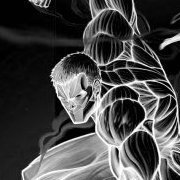
(WIP)(LDD)LEGO Technic Train
Imanol BB posted a topic in LEGO Technic, Mindstorms, Model Team and Scale Modeling
Hello everyone, some time ago i got amazed when i saw the lego trains, and after a long time watching thems i wondered, if there was any lego technic train, so i decided to search, and i didnt find any one,i ve just found some trains on internet, but none really a technic model, so i wanted to make one by myself, so here it goes: This is the main idea its to have a fully working lego technic train, i wanted to make it to work without rails (because it would be to hard to make or buy them), it would work like a crane like movement. The whole model isnt very good because i had almost no time to make it, the idea its to have 2 bogie motors, both powered and steerable, i have used normal wheels with tires, because normal lego train wheels arent enough big or grippier, also the profile and the look wouldnt work, so i made this: The bogies would be powered by XL motors in the frame (from the green part) and rotated by servos, the drivetrain its like a normal truck rear transmission (but without suspension), differentials are to prevent damage to the axles during turning: And this is a picture showing how it would work: I know this model is really ugly and simple, but is because i hadnt time and im first designing the working parts, there are obviously some strength problems, but i will do my best and i will keep working on it to make it better (and maybe bigger), any suggestion for an improvement or ideas are welcome (sorry if i have a wrong spelt or misused word). Thanks. -
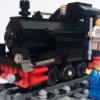
Looking for Vintage town, and vintage train sets
Rail Co posted a topic in Buy, Sell, Trade and Finds
Hello Everyone This is a pretty broad topic but I am looking for town (mostly vehicles, and construction sets along with small buildings), and also trains (12v and 9v era). If anyone has extras of these that they do not and have them at a REASONABLE price (I mean reasonable). Please either reply to this topic or preferably pm me. I am trying to build with older sets just because they are personally better looking and I am a collector of trains. Cheers, -RailCo -
05th October 2015 I am aware that all Lego Trains are grouped under the collective L gauge. However what real world model railway gauge would best match the old 12.0 V / 4.5 V trains? I am currently considering that the old Hornby Clockwork O Gauge might be the closest match available. I would like to know as this would help influence my future builds. Thanks
-
Hey all, It was time again for a big train crash! This time 13 trains (why? because "13") that crash into a big station all at once. Rebuilding of the station wasn't necessary: I've used it over a year now and it's time for something else. (I don't know what yet). I had to use all of my straight sections of rails (a little over 400). The rails were all interconnected at the station and as power source I've used a modified ATX computer power supply. Mainly because I don't have enough regulators to power all the tracks seperately and the trains run a bit faster at 12V. A train motor can handle that: it's only for a few seconds :) This is also the first crash video with a "story". Enjoy!
-
I just unboxed by first SBrick this weekend and this note provides a review of my experience thus far. First let me start with the background. I was fascinated by the development and release of the SBrick last year. It looked REALLY great, but I thought to myself, "while I'd love bluetooth controller, it looks great, but I don't think I could justify $60+ to replace IR if I only need one output." Of course there are a lot of people on this forum building their own homebrew bluetooth receivers, while they look incredible, these self-build receivers are way beyond the reach of my time resources right now. Yet, from long before the SBrick came out, I have been struggling with power issues in my two long passenger trains. The first train is my Superliner train with 7x 52 stud long cars, a dummy F40 and a powered F40 with a pair of PF train motors. The second train is my North Cost Limited with 8x 42 stud long cars, and an A-B-A set of locomotives (one powered with 2 PF train motors, the other two dummies). Examples of both trains taking standard lego curves can be found in this thread about a now aborted project to build wide radius curves. I made a 90° R88 right before ME announced their Kickstarter (man, that would have saved me a lot of time if I had known it was coming, but I'm still a happy man for the ME curves). Both trains predate the ME curves and I now have R88 and R105 curves (which both trains love and can take at full speed), both my permanent layout and my club's layout are both 9v, so I also want to be able to operate with the legacy R44 curves. I have had no power problems with the IR receiver powering a pair of XL motors and pulling VERY HEAVY trains (50+ cars in some cases), however, the combination of the train motors and these too heavy passenger trains taking multiple curves is just too much for the IR receiver. The original IR receiver can handle one 90° R44 curve without complaints for either train. Sometimes my club layout is large enough that I can use the full consist, but other times I have to set cars out if the straightaways are not long enough. As soon as the train is long enough to be in two curves the drag overpowers the IR receiver and it trips out for a few seconds... only to come back abruptly at full power and pull the magnets apart (in spite of the additional rare earth magnets). [Of course at this point in the review it is premature of me to say that it was the IR receiver that was tripping out, it could have also been the battery or the motors... but based on what I've found with the SBrick, it was the IR receiver. Anyways, back to the original timeline...] So for an upcoming show one of the other club members was talking about bringing 8 pf trains and letting the kids run them with IR controls. That is way cool and I think will be a huge hit with the crowd and the venue... but not so good for my running pf myself. For this show I don't want to do 9v (we are doing this one "just trains" and it will be our first show "on the floor"). So what's a man to do? Then I got to wondering about alternatives for IR in general, and higher power in particular. That was when I discovered that the SBrick can deliver up to 3A while the standard IR provides about 1A and I think the v2 provides up to 1.5A. I needed no further convincing and got one to give a try. I unboxed it two days ago. The first think that is clear, you need an account on the sbrick servers to configure your receiver. The SBrick folks have videos on line showing how to configure the software, but you first have to sign up for an account. This part was one of the things I did not like. Rather than simply offering a receiver, they are offering a social networking site that you have to pass through before you can get to your receiver. Not a huge deal, I just found the social networking a minor annoyance. It only took 5 min to turn off 20+ "share this" options, an equal number of "notify me when" options, and switch my profile to private. I'm sure many will find it a nice bonus, but for me I don't plan on spending much time on the SBrick site. I just want a plain vanilla train controller. This point could also be an issue in 5-10 years if they stop supporting the SBrick, but if it works it is worth the small risk for me. Once you have your account and the SBrick app you can go to the profile market... but none of the controls looked like the met my needs and what little documentation there was did not clarify things for me. So sooner than I had expected, I was off to design my own graphical user interface (GUI) on the Beta version of the designer site. First drawback is that it appears the site only works with Chrome or Safari browsers (not a problem if you already use one of those, but another minor nuisance if you don't... and here too, once I get my GUI working, I don't plan to spend much time on this site either). I was not able to find much documentation on the GUI design, so here's what I discovered: (1) I think you need an "exit" button to quit your control, at least the default GUI has one, it is a special object class and since it seems like a generally desirable feature I did not feel like exploring whether you can do away with it. (2) As I recall, there were three other types of objects- a 2D slider control, a 3D joystick control, and a push-botton. (3) While it was not apparent to this newbe, you do not define which specific output each control is set to (the SBrick has 4 outputs). Instead, you come up with a name for the particular output. I wound up using a single 2D slider and named it "throttle". (4) There are a lot of control settings you specify (or accept the defaults): min power, max power, default start position and power, "snap back to default start position when control released (like the non-train PF controller)" or "hold the last setting when released (like the PF train controller)". It takes some trial and error to get all of these settings to your liking. Each time you want to make a change you need to tweak the GUI layout in your browser, then download them to your device, then tweak the settings on your phone/tablet (more on that in a moment). It is nice that you can scale and position the various control elements where you like on the GUI layout. I think you can include multiple SBricks in the layout too, so a single controller could easily have room for 4+ trains on a tablet and 2+ on a phone. (5) It looks like the GUI is infinitely customizable, they offer 6-12 options for button styles, slider styles, background styles, etc. or you can upload your own artwork. (6) Unfortunately it looks like each GUI design is aspect ratio dependent, presumably to preserve custom artwork. So the GUI I designed for my phone was not available on my tablet and I had to redo it for the tablet at its aspect ratio. Here too, not a big deal given the simplicity of my controller. It's a bit like programming your microwave for the first time. It would be nice if they also had a "universal layout" option that could be used on many different platforms, by shrinking it to the most constrained dimension... maybe in the future. In the mean time, it would have been REALLY nice if they had an option to copy an existing GUI so that you could adjust it (if that option is there I couldn't find it). None of this is a deal breaker for me, just be prepared for a small learning curve as you get up to speed with their system. It took me an hour or two to get to a point that I was satisfied with. With your GUI designed or redesigned in your browser, you then go to an option on the SBrick app to go to the profile market to download a profile. Once downloaded the profiles are stored locally, so you could design a single throttle control in the GUI and then in the SBrick app make variants for several different locomotives, each with their own SBrick. Or as noted above, you probably could also make a single controller that controls multiple SBricks. One minor annoyance to me was that every time you went to the profile market it first insisted on loading all of the standard GUI options (none that I wanted) before it allowed you to get to your own GUI designs. Once the profile you want has been downloaded to your device, you then go to "my creations" to actually associate a GUI with an SBrick. I think you have to have the given SBrick(s) on initially so that your device can sync with the SBrick. Then you go to the configure page for the creation and this is where you tell it to associate the "throttle" in the GUI design controls with one or more specific output(s). I decided to use the Superliners as my test case since this train has more drag (heavier and longer cars). Since I have two motors I decided to put each on a different output from the SBrick. They were previously on a single output from the IR receiver. Not sure if this makes a difference on the SBrick, but it was easy enough to set the throttle to control two or more outputs. There are also virtual pole reverser switches similar to the little switch on the IR controller. Then you are ready to run your model... well... as they recommend, try it first to make sure you have the pole reversers set to the direction that you want. In my initial design I wanted a "kill switch" like the IR train controller in addition to the throttle. I could not see a way to associate two control elements to a single SBrick output, so away went the kill switch. Usually hitting the exit button will kill all motors, but not always (here too, more on emergency stop in a moment). I started with letting the throttle range from full reverse to full forward, but I found that getting it to stop at no power was very difficult. There was no "snapping" to zero. Since the Superliner and North Cost Limited are effectively one way trains, I made a second controller that is limited between zero and full power (no reverse beyond "hand of god"). So I can easily flick it to zero without worry. There might be away to fix this, but I haven't found it yet (remember, I'm a newbe at the SBrick). So I first had the model running with all of the PF innards exposed and it ran great. No problems pulling the entire train through two 90° curves and a small S-jog all at once. It ran for at least an hour with now power drops. So that's how I knew it was the IR receiver that was limiting me before, the IR receiver would not survive when the train was in the two 90° curves (R44). So at this point I stuffed all the PF wires inside the model and put the roof back on. Of course now it started misbehaving. !@#$% did I drain my battery so quickly with the heavy load? The IR would run for a few hours. Nope, that wasn't it. After some trouble shooting I realized that I had inadvertently knocked one of the connectors off when reinstalling the unit after testing. So only one motor was getting powered. As a result, the locomotive would stall once the train was in two curves. Apparenlt without intending to do so I discovered that the SBrick has a much nicer overload response than the IR receiver. The train sat there and the engine did not jet off at full speed, it did not move at all until I rezeroed the controller. In fact the single powered motor was strong enough to pull the train in a single curve with wheels spinning while pushing against the dead motor. Once fixed, I didn't even have problems starting in the most twisted part of my layout. That was when I decided to see how far I could push it. At the moment I have two single crossovers in my layout (I've been playing with the PF trains). So the train effectively went across two switches, through a 90° curve, then through two more switches back to the original track. It was as the locomotive was returning to the main track when it overpowered the rare earth magnets. So more than enough pull and something else failed before the SBrick was pushed to its limits. Now here's where I learned another important feature of the SBrick. Once I set the train running, I could go to blank screen on my device and the train would still run. Nice, you don't have to run down the batteries on your device to keep the trains running. My trains are in the basement and I went to get something upstairs. At one point in this trip there were two concrete walls between me and the train. When I returned the train was stopped. Did that stinking battery finally run out? Nope, it started right back up when I hit the SBrick controller. Okay, what happens when I turn off bluetooth on my device? Train stops. Cool. Lose contact with the controller and the SBrick stops. Turn bluetooth back on and the SBrick responds immediately to the next command. So there is a potential emergency stop if the exit button does not do it for you. So needless to say, I will be buying a second SBrick here in the near future for the North Coast Limited (hum... maybe I can build some of those other cars that I was forced to leave out for the IR receiver). For now I'm going to stop at two SBricks. It is nice to be able to completely hide the receiver, but probably not worth the extra $45 for me given the number of PF trains that I have. The extra power, however, is definitely worth it if you need it.
-
Hi everyone! I chose a very well-known theme for my newest MOC. Almost everyone has a Lego Siemens Taurus at home :D . If you search for it on the net, the number of the matches will be endless. We can find every building method and technique in them. But I guess, I successfully found out new solutions to copy the real one! The engine works with two M-motors. The gear ratio is 1:1,667. Hope you like it! Video: During the scenes with the real Lego track there is a slower version, I changed the gears after making them. The scenes on the yellow brickbuilt track show the faster speed. Pictures: Detailes: The model and the real one have the round and the square hole, too! The overall shape of this section is also similar to the real one, because of the upside-down 1x2 slope. The section of the door has two interesting techniques. Behind the door there is an old 3 brick high panel (without side supports). It prevents the black tiles (the handles) to be at the same plane as the door. Most of the MOCs and official Lego sets use 1x1 plates with vertical clip to fix the bars (handrails). But the distance is too big between the wall and the bar. I used this part. Behind the wall the previously mentioned 1x1 plate holds it. The bars touche the wall, there's no gap between them. Many of the older Taurus models don't have good side-windows. The builders often used stickers. But my windows contains olny Lego pieces. Technical things: The engine contains two M-motors, an AAA battery box, an IR receiver and a short extension wire. The chassis is made of thechnic bricks, and I used 16 studs to fix the body on it. Between the chassis and the bogies there are the smaller versions of technic turntables. The bogies are selfmade, I used more than 160-160 elements for them. I'm not ready with the LDD file, but I think the whole model contains approx 1400. Thanks for watching!
-
A British Rail Class 08 Diesel shunter, motorised with power functions BR 7 by Golem Lord, on Flickr BR 8 by Golem Lord, on Flickr BR 3 by Golem Lord, on Flickr BR 1 by Golem Lord, on Flickr Easy removal of roof to access on/off switch. Please comment below!
-
Hi! I'm in the process of revamping my layout. One thing I wanted to change was to make the track bed look as realistic as possible. Namely, I wanted single spaced railroad ties instead of the Lego double spaced tie. Single spaced ties are easy to do on the straight sections but the curves present more of a challenge. I looked around the forum for design ideas and didn't see anything specific so set about to figure out the problem myself. Seeing some of the great layouts on here (Texas LUG, PennLUG) I knew it could be done which makes the battle a little easier. Here is what I came up with. DSC01329 by Scott Roys, on Flickr DSC01331 by Scott Roys, on Flickr
-
An overall shot Close Ups A city scene James River Crossing Metra Train BNSF Freight TGV and one I found an image of that I recreated here.
- 27 replies
-
- thomas the train
- santa fe
-
(and 5 more)
Tagged with:
-
This is a tutorial detailing how to modify a LEGO 9V train motor so that it may be powered independently of the track. This effort is part of a larger project inspired by Thorsten Benter’s article in Railbricks Issue 7 titled “PF and 9V Trains: The Best of Both Worlds”. Step 1) Open the 9V motor. This has been covered elsewhere, so it should suffice to say you carefully remove the 12 tabs holding the bottom cover on with an xacto blade or something similar. There is enough friction to hold the bottom cover in place later even without the tabs. Step 2) Remove all internal parts. Ignore the fact that I took this photo after completing step 3. Step 3) Use a rotary tool with a cutoff disk to bisect the metal strips in the top of the motor enclosure. These strips are exposed in the top studs, and we will later use them to pull power from the track and apply power to the motor. Very important: Be sure to apply NO PRESSURE when using the rotary tool. Instead, just lightly touch the spinning cutoff disk against the metal strip, and let the tool do the work. It will take some time, so be patient and careful. If you apply pressure, the metal strips will heat up and deform the plastic. If the plastic deforms, it will be impossible to interface with LEGO bricks and PCB adapters (like the one in the upper-right corner of the picture). Keep it light and easy. You will thank yourself later when you haven’t ruined your motor’s plastic housing. Step 4) Desolder the metal pieces from the electric motor. I don’t have a picture of this exact step because I used the electric motor from a Power Functions train motor. If replacing the 9V motor with a Power Functions motor, open up the PF train motor using a T6 bit, remove the electric motor, and desolder it from the wires. Step 5) Solder a short length of wire to each tab on the electric motor (do this outside the housing to avoid accidently melting it). I used 32 gauge DCC decoder wire, but you can use whatever you have that will fit inside the motor. Reassemble the motor with exception of the wheels and the bottom cover. Step 6) Attach the wires to the outermost halves of the metal strips; the innermost halves are connected to the wheels through the wipers. I used a silver epoxy for this. I chose silver epoxy for two reasons: 1) I didn’t want to risk melting the studs by soldering the wires to the metal strips, and 2) silver epoxy has a lower resistance than graphite epoxy. Step 7) Reinstall the wheels and make sure everything is running smoothly. This would also be a good time to lubricate the gears if you want to. Make sure you don’t get any lubricant on the electrical parts! Press the bottom cover onto what remains of the tabs, and you’re done! If you ever want to run the motor directly from track power, simply use a PCB adapter with a loopback connector or connect a LEGO wire (9V or light gray end of PF). This is what a PCB adapter looks like when installed on the motor. (I’ve updated the design since taking the previous photo.) And here is a connector leading up to the electronics (currently just a Power Functions battery box, soon to include a Bluetooth receiver) in my Horizon Express. The connector plugs into the PCB adapter. The PCB adapter is attached to the electrical studs on the motor. And the motor is pinned to the bottom plate of the locomotive. Now I can charge the battery in my train without taking it off the track, run it indefinitely on a mixed metal and plastic layout, and have non-line-of-sight control when I add the Bluetooth receiver. It really is the best of both worlds!
- 9 replies
-
- 9v
- power functions
- (and 5 more)
-
Nothing special. Just an old railroad warehouse.
-
Hi guys, I have been trying to make some trains (generally diesel) and a problem that I have always found is powering. for a steam locomotive this is usually pretty simple because of the lack of articulation but wel, bogies are articulated and motors are mounted in the build itself. my question was, how does gearing react to this? and what is the handiest for compact solutions? vertical or horizontal? with vertical you get this: lego 6L train bogie by alterlegotechnic, on Flickr how could something like this be used in a locomotive? would the motor stick loosely in the chassis and what about a vertical motor like this (http://www.brickshel...16/cam06194.jpg) will there happen something in corners? like that the would go faster or some? and with Horizontal you get this Iowa Pacific SLRG 515/518 Mechanics by wildchicken_13, on Flickr how can gearing do this? i mean the rotating bogie, what happens to the gears in it? obviously could 2 M motors be needed for a small train (around 4 cars) or will it fail? I heard something about a V2 receiver? I have a V1 (I think) and that a normal one won't be able to give enough power to both? What is better? XL or M? when will a XL be needed? so in one sentence: vertical or horizontal? what happens to gearing and what is easier when using normal motors?
-
THE M1 SHARKNOSE Design procedure and notes Last year I competed a Lego big boy steam locomotive from instructions I found online plus a few modifications I wanted. Now I want to build another engine, but not flat out copy someone elses design or even recreate a real train in Lego. I prefer steam engines mostly so that is what I decided to build. There are different things I like about different engines so I decided to list them and try to incorporate them into a single design. Design details to include: - articulated engine design - large cylinders - 2 axle leading and trailing trucks - shark nose from the shark nose diesel locomotive - sloped boiler from the PRR K4 - streamlined look - large 4 seat cab supported by trailing truck - the PRR T1 4-4 driving wheels arangement - that box on a tender someone can sit in when the engine is moving in reverse - large tender - special/rare/unique tender axle/wheel arrangement - possible sloped end of tender - larger than most engines, but smaller than the big boy engine - Big Bens Bricks extra large driving wheels - custom drive rods - Powerful, yet fast - all BBB driving wheels connected to motors - 4 large motors in boiler - V2 IR reciever in tender - 2 battery boxes in tender - not black because I want a brighter colorfull engine like the Mallard and other British engines (blue, green, orange, etc) but not a rainbow of colors either Now I know I said not copy other peoples designs, but there is an axle design that Nebraska uses and I think it is the best axle design ever created, so I am going to try and re-create that axle design. - Nebraskas awesome axle design Additionally I decided not to paint any real railroads name on the tender or name the engine after a real engine. The name also includes some of my favorite ways railroads named there locomotives. PRR (my favorite Railroad) typically used a letter and number to name a type of engine eg K4, T1 etc. This is simple and easy to say imo. My nick name is 'Moe' thus the "M," "1" for my first MOC design, and sharknose after the sharknose diesel. The M1 Sharknose! I also plan on (hopefully eventually) putting "Moe's Railroad" on the tender. My lucky number is 80, so this will be engine number 80. United States flags will be on either side towards the front 'waving' similar to Nickel Plate Roads flags. Still not yet sure what symbol with 80 will be on the front. (PRR's was the keystone symbol with engine number in the center.) So after this insane list of things I want to include I started working on a design in LDD. The first thing I wanted to do was get a good wheel arrangement down with the correct heights for the boiler to clear flanges. I designed an entire wheel set and realised it was too small. The engine would have been DWARFED by the big boy. I began work on a MK2 version, except I remembered to use BBB XL drivers (represented by backwards lego flanged drivers). The sets of driving wheels both rotate in the center to provide better turning and less overhang. I imported my big boy engine into my new train file so I could reference it for height, length, and width while building. I want my engine to be shorter, the same height, and 1 stud wider than the big boys boiler. Medium motors are place holders for the large motors I will install. The two drive wheel boggies are identical except for where the front and trailing boggies attach. The tender will be about the same size as the big boys tender. The tenders wheel arrangement features 2 seperate boggies with 2 sets of trucks. The wheels under the BBs tender work well except 5 axles are connected and 2 axles are connected making one set of axles cause a large amount of overhang on turns. I simply added a 8th axle and seperated the trucks in the center for better turning. This also meets my goal of having a unique wheel arrangement under the tender! I may change those black and grey turn tables to bogie plates so the boggies dont easily fall off when I pick it up. The 1x6 flat tiles will help the tender slide over the axles. Bumpers are placed on the engine and tender due to the coupler. The coupler is designed to rotate in 3 different places for tight turns when the trailing bogie needs more freedom to follow the driving wheels. Battery boxes will be wired for longer supply, not over supply of electricity. Last, the tender will feature a 'real' coal load (bunch of spare/random black and grey 1x1x1 parts); will hide a handle to lift out the coal to show the battery boxes and IR sensor. I would like to use the axle design (Nebraskas) from the trailing truck on the tender axles, but am not sure how to make it look good. Chains will be connected from the trailing bogie to the tender. Possible coal auger (universal joint?) I am currently trying to figure out how to get a good look for the front. The boiler would stick out and be so far above the leading truck I just don't know what to put there right now. I might just design from the cab forward and see what I have once I get to the front. Suggestions welcome. If you see anything blatantly wrong, please let me know, thanks!

